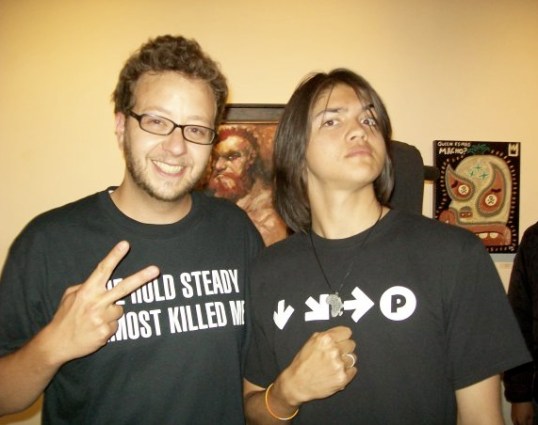Video game publishers have been shooter-crazy over the last few years, but gun-centric titles weren’t always king of the hill. For a good chunk of the 1990s, the fighting game genre captured the majority of gamers’ attentions in both the arcade and home console arena. Franchises like Tekken, Street Fighter and Soul Calibur each have had dedicated fan bases grow up around their characters and movesets.
And one man’s seen the fighting genre go from life support to million-dollar tournaments, managing to emerge as a guru for several quick-multiplying generations of gamers. Seth Killian is a revered name in the fighter communities, going from competing in matches to announcing in tournaments and consulting on development.
(MORE: Mortal Kombat Review: Banned in Oz)
Years ago, Killian was a prime mover in the organization of EVO, one of the world’s biggest fighting game tournaments, with fans and contestants coming from around the globe to bask in the glow of virtual fisticuffs. Nowadays, he’s a special consultant to Capcom on the Japanese company’s top martial arts series, Street Fighter and Marvel vs. Capcom. I talked to Killian about the recently released Super Street Fighter IV: Arcade Edition, the upcoming Ultimate Marvel vs. Capcom 3 and the allure of fighting games
You’re just coming off of the EVO fighting game championships a few weeks ago in Las Vegas and overall, this seems to be a year where the fighting game is very resurgent as a genre. Can you talk about some of the things that might be feeding into that?
I’ve wondered about this, too, sometimes and, for me, I think it kicked off with Street Fighter IV, but it’s been sort of a rolling thunder since then. It makes me excited.
I look at fighting games as sort of a focal point. In a lot of ways, fighting games are a pure distillation of the kind of connection and human interaction you get when you’re playing somebody else in a video game. These kinds of games put a lens on the people involved and on the interaction that other genres don’t.
I think you can express a lot more of yourself personally in a fighting game than you can in some other games, even with character customization and all that. If you really sink time into a fighting game, I can learn a lot about you as a person by playing you.
You also get that whole grudging respect thing. So that interaction has always been great. And of course, all of this came from the arcades. Arcades have mostly gone away now, which is sad. But that experience is still there. But I think for fighting games the technology sort of finally caught up with it.
What kind of improvements are you talking about? The processor speeds, arcade stick controllers for home use that are as good as ones in the stand-up machines or something else?
The fighting game technology I’m talking about is things like vastly improved online play versus no online play or unplayably bad online play. Now we have pretty playable online play. And you can really learn a lot and get a lot of experience, sort of like poker or something like that.
You can start grinding in those rooms. And then the other thing is YouTube. I used to have arguments at the beginning of the Internet with no pictures and no videos about Street Fighter. And those were very difficult arguments to win that went on for hundreds of pages. Now, we have all these great tools and people have gotten so smart about fighting games. There’s been this sort of stored knowledge base that’s become more readily accessible. As the original generation of fighting gamers, like myself, have gotten older, we’ve sort of passed on the spirit of educating each other and trying to give back to the community and putting up videos to share tactics and all that kind of stuff.
So I think those two, the power of online play–as in at least a possibility–and then also just all the great online learning resources have really made fighting games successful and viable like they weren’t before. It’s the same great DNA, but it wasn’t really possible to do those things.
(MORE: Snikt vs. Shoryuken: ‘Marvel vs. Capcom 3’ Review)
article continues on next page…


